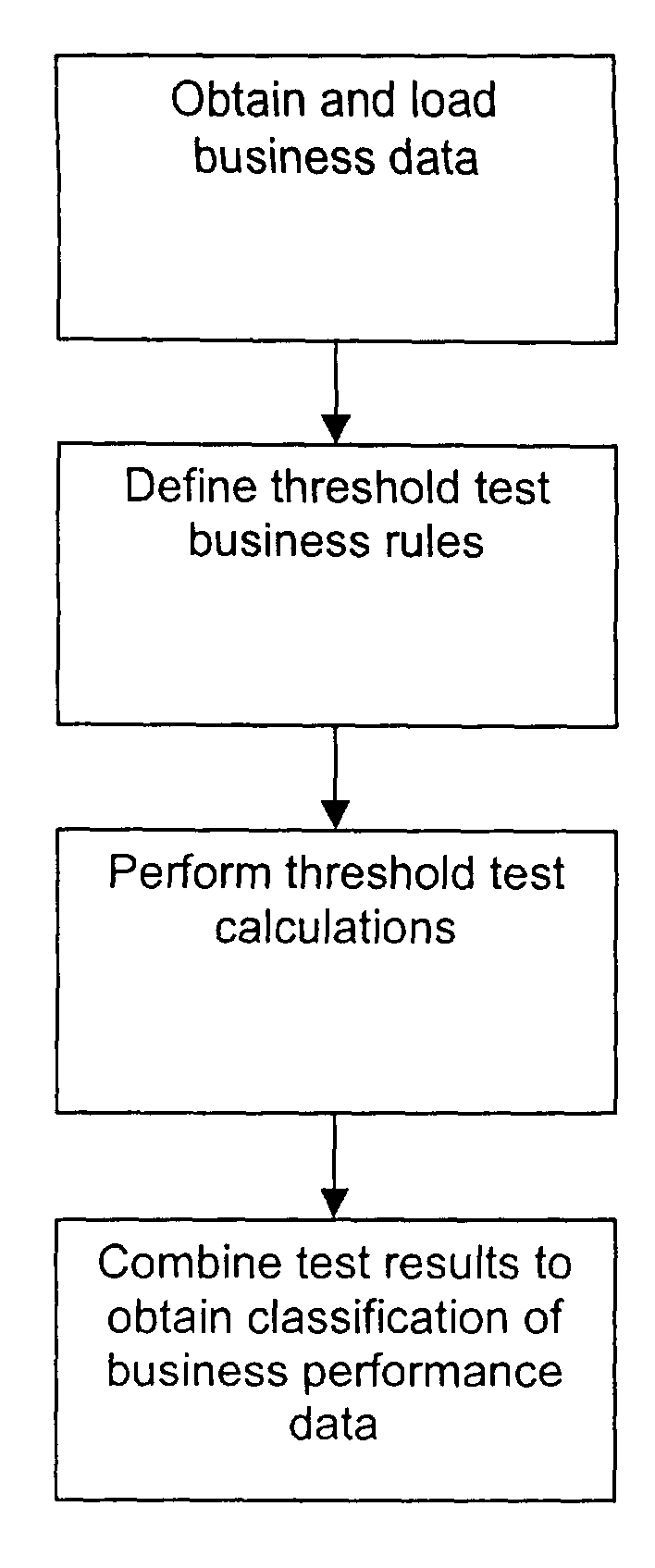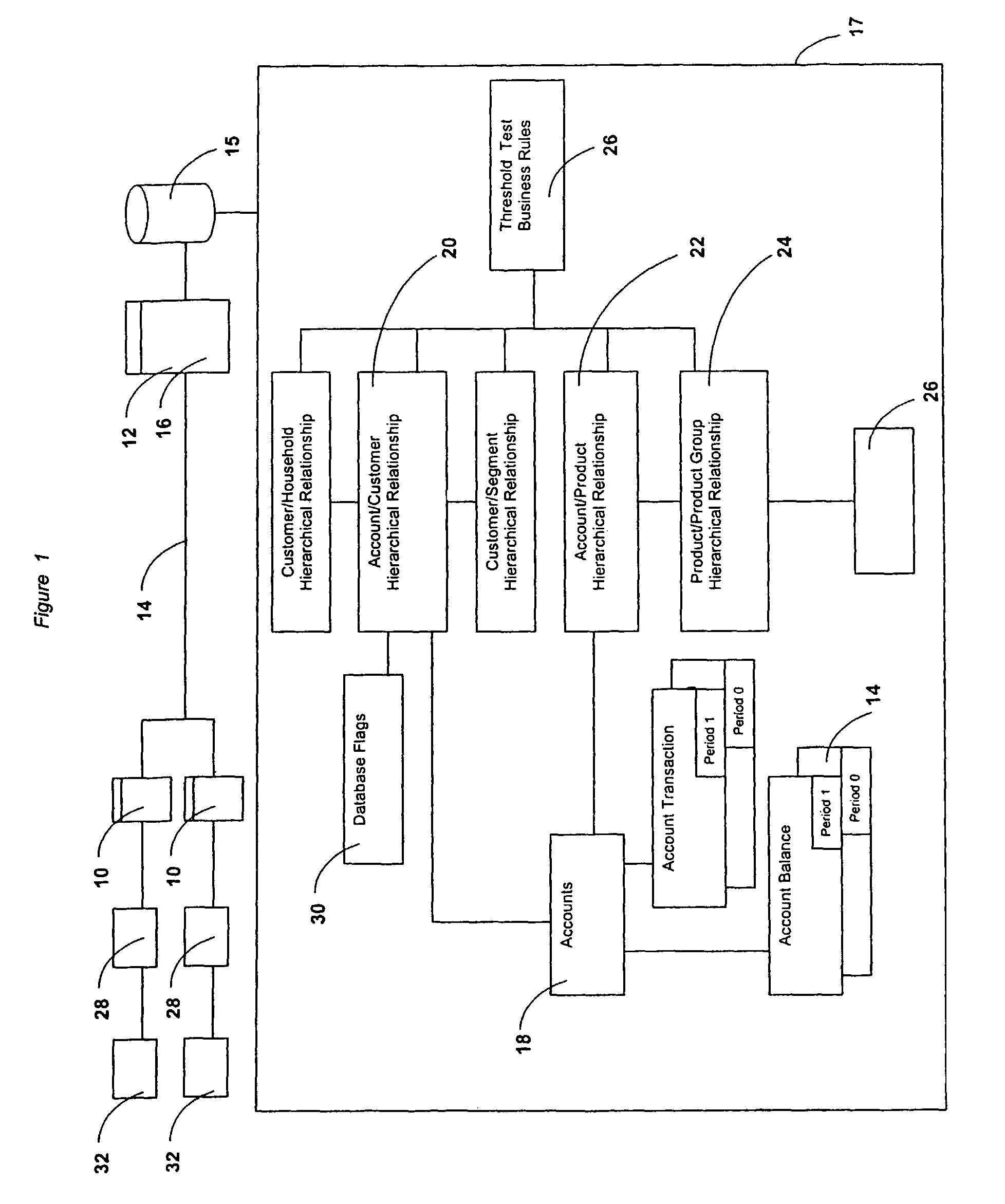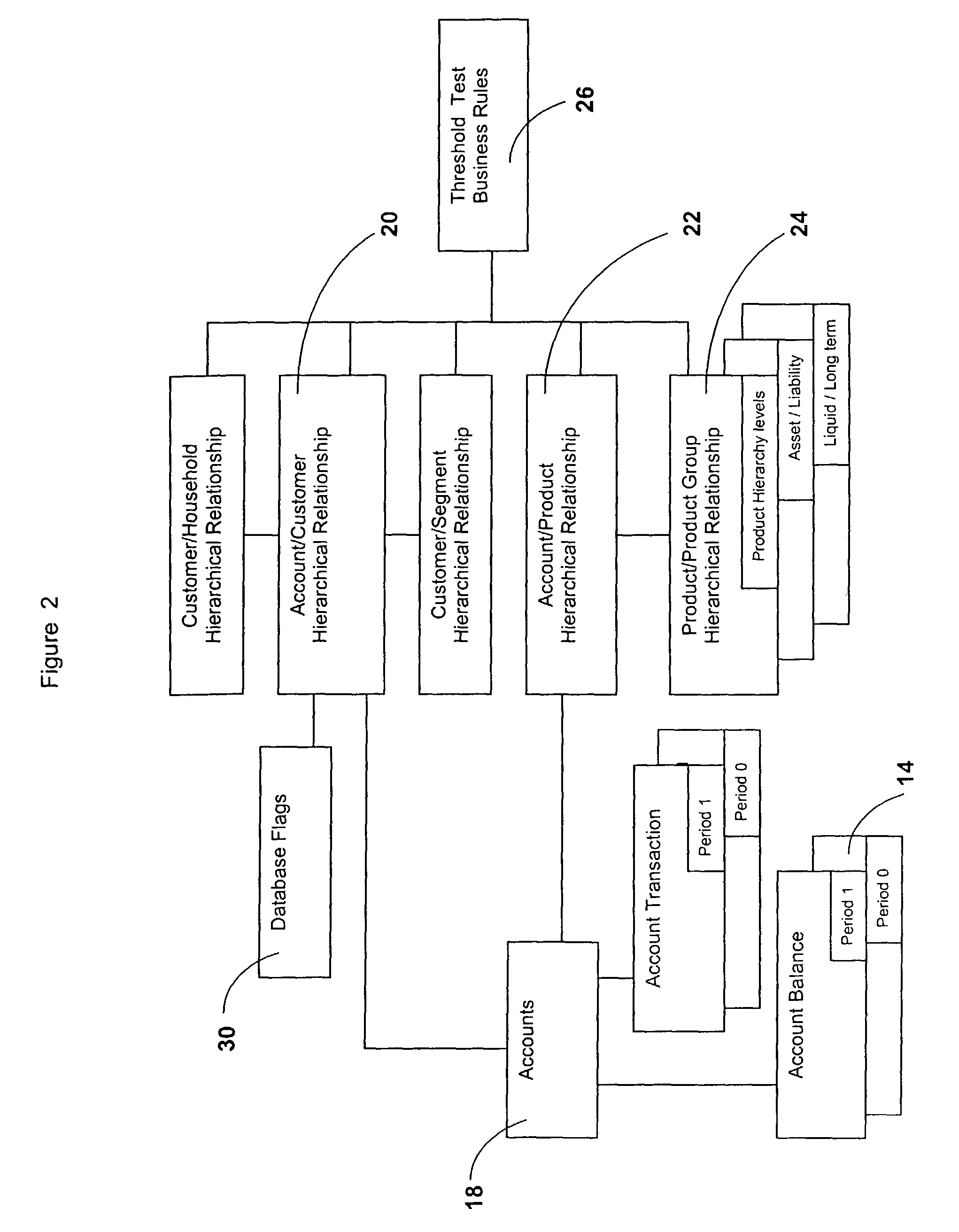One of the challenges in providing such systems and related databases, and implementing such methods, is that monitoring of performance of a business may preferably include analysis of relevant data of different types, and further segmentation within such different types of business performance related data.
Another challenge in providing such systems and related databases, and implementing such methods, is that businesses are often organized into a number groups for the purpose of business performance, and it may be preferable to measure business performance in accordance with one or more of such groups apart from the rest of the business.
Another challenge is that it is often difficult to obtain a holistic or enterprise view of customer behaviour.
The financial services business is illustrative of the disadvantages of the prior art because financial services businesses generally offer a plurality of “products” in more than one location at any given time.
Yet we know from the example that this overstates the activity of Customer “A” that merely transferred money between accounts.
Therefore, one
disadvantage of the known method of measuring business performance in accordance with “Account
Level Measurement” is that the data provided as a result of such method does not permit distinction between transfers (“internal”) and
third party (“external”) money flows.
Product substitution may not be easily separated in accordance with prior art “Account
Level Measurement” methods from business volume changes associated with business acquired or lost.
First, the measurement of real business volume changes will be inflated by failing to recognize and eliminate the effects of internal transfers between accounts and products.
A second potential
disadvantage of “Account
Level Measurement” is that business performance measurements in accordance with this method may indicate success and failure inappropriately, as in the example above where demand deposits “gained” 100, term deposits “gained” 1050 and money market “gained” 1000.
A third potential
disadvantage of “Account Level Measurement” of business performance is that reliance on this method of measurement may result in
distortion of compensation of sales personnel based on sales performance.
Reliance on account level
metrics results in overcompensation of sales personnel due to the failure to eliminate the effects of internal transfers in the determination of acquisition volume, as outlined above.
A fourth disadvantage of “Account Level Measurement” may result when a business relies on information of this type as input to behavioral models or marketing strategy or actions.
“Product Level Measurement” may be disadvantageous as a means for monitoring business performance in that it requires aggregation of individual account
level data prior to determining whether a change has occurred at the product level.
A consequence of this aforesaid disadvantage may be that changes observed in a product level metric do not “explain” changes that are observed at the customer or customer
group level, due to the offsetting effects of changes in individual customers' accounts.
For the reasons stated, “Product Level Measurement” may result in a number of other related disadvantages in monitoring business performance.
A second potential disadvantage in basing business
performance monitoring on “Product Level Measurement” occurs when sales compensation plans are based on
metrics of this type.
Placing reliance on product level
metrics may result in inappropriate compensation of sales personnel due to the failure to eliminate the effects of internal transfers between products in the determination of acquisition volume.
“Customer Level Measurement” may be disadvantageous as a means for monitoring business performance in that it requires aggregation of individual account
level data prior to determining whether a change has occurred at the customer level.
A consequence of this aforesaid disadvantage may be that measurement at the customer level provides no insight into which accounts, products or product groups underlying the observed customer level change are affected, limiting the usefulness of the information for the purposes of portfolio analysis, performance planning and evaluation, compensation of identification of specific marketing strategies or actions.
The prior art methods may not detect this increase in position, and may fail to indicate which products increased or whether the accounts were newly opened or augmented.
The marketer knows a “thank you” letter is an appropriate response, but the prior art methods may fail to provide the context for such a communication such as what the customer bought.
Managers of these institutions have in many cases been unable to determine how much of the growth in mutual funds was a result of
third party sales and how much was attributable to internal transfers of business.
Similarly, managers have not been able to identify how much of the decline in term deposits resulted from transfers to mutual funds (due to changing investor preference) and how much of the business was lost to third parties.
Similar problems are found wherever product substitutes are available from a business, including for example in the areas of retail sales or
telecommunications industries.
For example, when introducing a new product into an existing line of similar products in the retail sales industry it is often difficult to establish how much of the new product's sales volume is the result of cannibalization or substitution versus new sales for the product line when considered as a whole.
A different performance management problem arises when a company institutes more than one of the prior art methods at the same time.
Because there are offsetting effects within a customer's total position that cancel each other out when a customer transfers business among products or services (some go up some go down), the measurement of business performance at the customer level may not agree with the results, based on the same data, calculated at the product or account levels.
This situation arises often and results in
confusion and uncertainty among the decision-makers of the business as to which information is correct.
The prior art methods do not generally permit the manager to reconcile between the different views of business performance provided by the prior art methods described, i.e. such prior art methods may not provide an overall snapshot of business performance relative to account, product and customer levels simultaneously.
Without the ability to differentiate between “old money” transferring from one product to another and “new money” transferring into the company from external sources, there is a substantial risk of overpayment of commissions.
Particularly in areas of business where sales commissions represent a relatively significant cost of business, the
resultant overpayment may also be commensurately significant.
The prior art methods do not provide for differentiation of “new” and “old” money, which is fundamental to internal control of commission payments.
Furthermore, the prior art methods generally do not provide key information that is useful in
time series analysis of customer behaviour.
However, the prior art may not include predictive modeling of customer behaviour based on identified and classified flows of customer business into, out of and among products and services, since the prior art does not enable these actual customer behaviours to be defined, classified and measured on a reliable basis.
The prior art may also generally fail to identify qualified opportunities for specific marketing actions and interventions with customers.
Most of the cost to a business arising from lost business arises through the process of partial defection (removing part of a customer's business) rather than total defection (removal of all of a customer's business).
In accordance with the examples provided above, the known methods of “Account Level Measurement”, “Product Level Measurement” and “Customer Level Measurement” may not provide adequate means for monitoring business performances, and particularly as a means for producing business performance data that is sufficient for meaningful business performance analysis, or for appropriate response to a business
gain or business loss.
 Login to View More
Login to View More  Login to View More
Login to View More 


